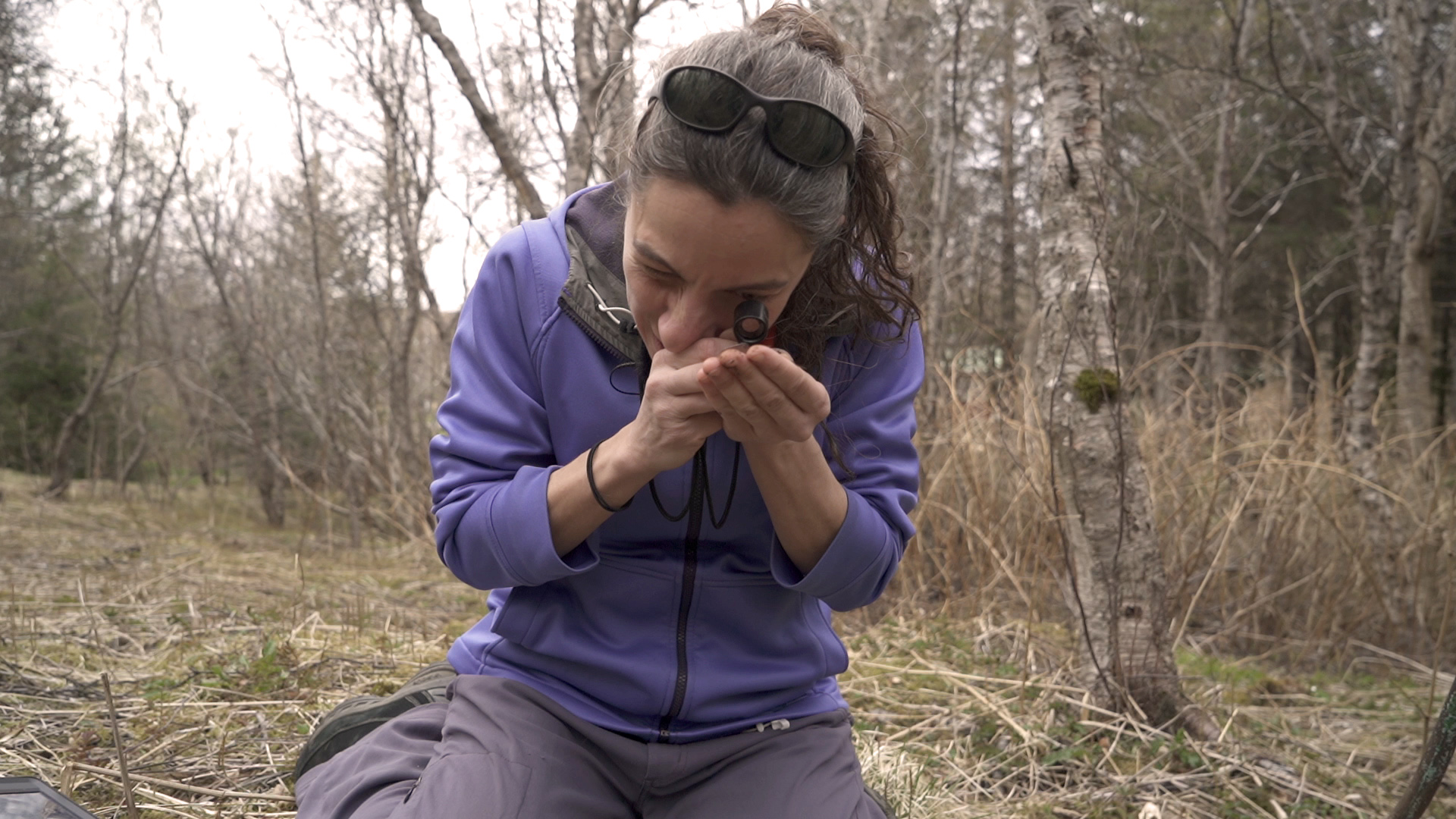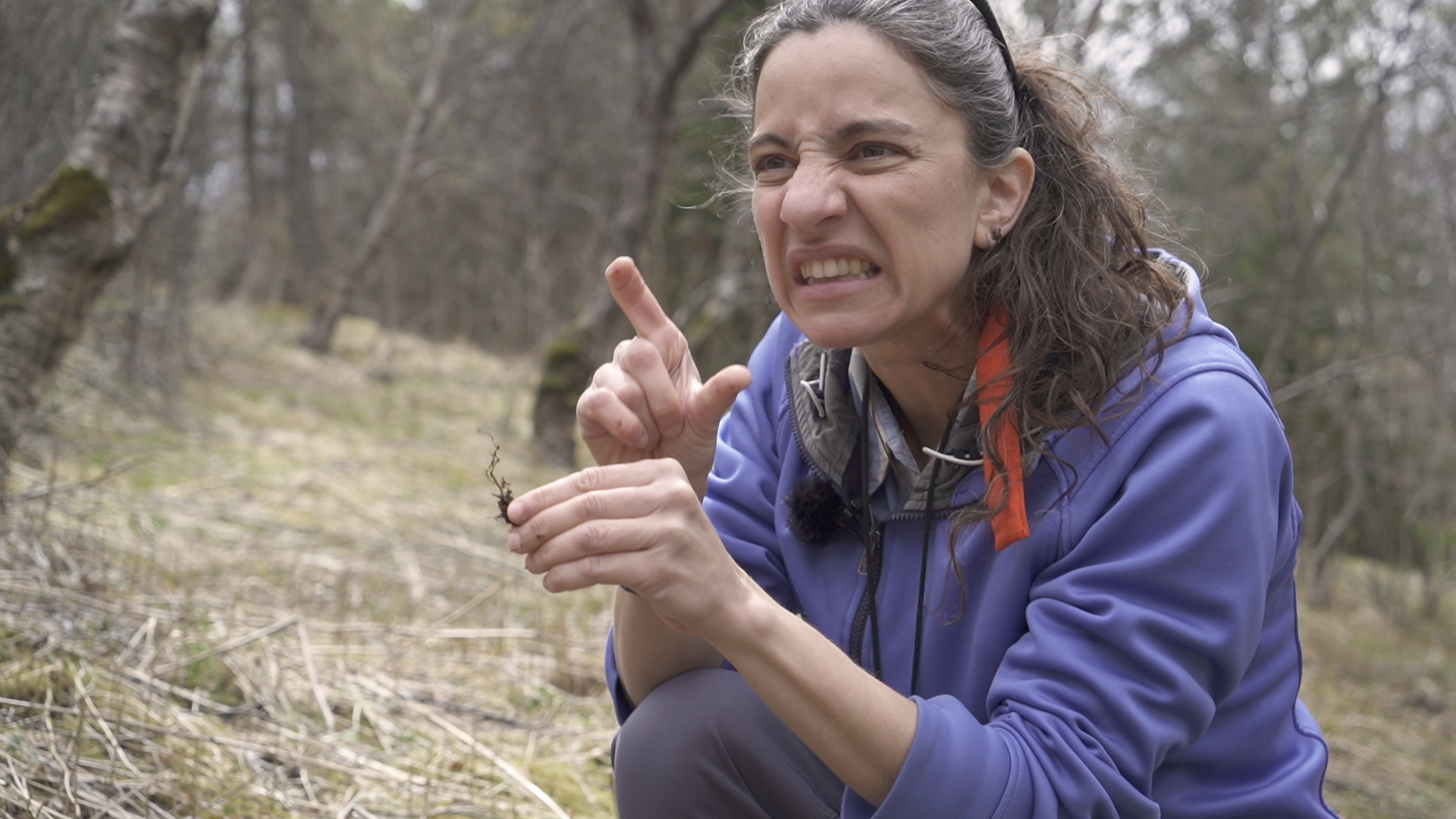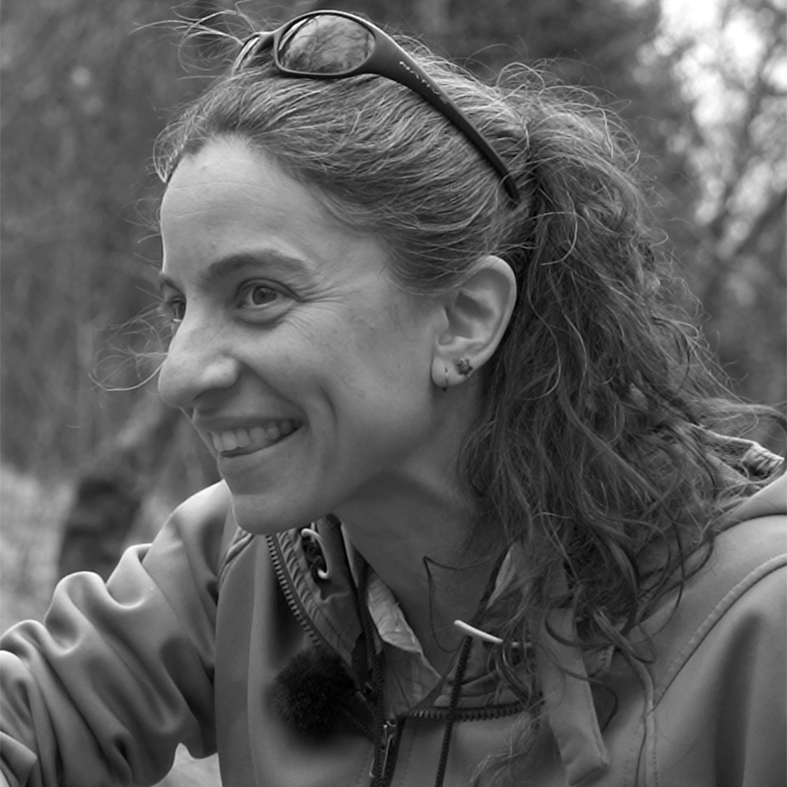Forests and their fungal friends
Interview with Christine Palmer, Fulbright-NSF Arctic Research ScholarWhat is your research about?
I’m here as a Fulbright scholar with the great privilege to work with the Icelandic Forest Service. My goal is to take a look under the ground to try and figure out how we can grow healthier forests. Iceland is a pretty amazing place for a lot of reasons but one of them is the incredible effort to plant forest. Soils here are a little bit different as there are a lot of places with brand new soil. But for a tree to survive, it has to have fungus friends underneath the ground and we don’t know if those friends are here yet. That’s what I’m trying to figure out.
What’s going on below the ground?
The short answer is, it’s really complicated. As humans we love things that we can see and that are really straightforward. None of that is true under the ground. When you walk into a forest, first of all you probably notice animals or anything that’s moving. Then you might notice the trees and maybe the things that are growing underneath. But if you take a shovel and dig down under the soil, it’s mind-boggling. So much of what’s happening in the forest is actually happening in the ground. It’s the sheer number of species like fungi and insects, but it’s also a very noisy place. Envision yourself walking into a crazy marketplace and there’s people screaming “I’ve got peanuts, get over here!” or “I’ve got your fresh socks!”. People are trading, arguing, shouting at each other, playing together – that’s what’s constantly going on under the soil.
Who are the actors at this marketplace?
Trees are one of them, obviously underneath there’s a lot of tree roots and when trees are doing photosynthesis they’re pumping sugar down into their roots for storage. But it’s also what they trade: “I got sugar, what can I get for some sugar?”. They are trading with fungi and the fungi say: “Hey, I got nitrogen for you and real fresh phosphorus. Do you need water, I got some of that, too!”. This trade is going on all the time, they work together and help each other, but they’re also not going to give something for nothing.
There are also bacteria in the soil that tend not to be part of this trade but they’re certainly using the scraps. And you have insects coming in, happily chewing somebody up. But the real two partners that are involved in this trade intentionally are the fungi and the trees.
Do trees use fungi for something else than trading as well?
You can also think of fungi as a kind of communication lines. We assume tree roots are taking up everything but it’s actually the fungi that are forming nets, to reach out and connect each other. There are these pipelines where signals can travel. This could be resources like “Hey, send over whatever I need” but it could also be “Hey guys, I’m being eaten by insects, we better let everybody know!”. The signals can travel through these fungal networks – we call them mycelium – over to the rest of the forest. And they can travel quite far and fairly quickly when you think about the lifespan of a tree, so it’s pretty amazing.

If trees at the other side of the forest receive a message about an insect attack, how would they react?
Trees are very able to produce defense compounds. It’s often something that makes them taste terrible or is even toxic for the insect. And if you get the signal from your relatives way over on the other side of the forest “Hey guys, there’s this caterpillar”, you get a chance to build up your defenses before the caterpillar gets to you. This is in everyone’s best interest, as humans we do the same – we take care of our family even if sometimes we may not come out as well, but at least our family will do ok.
When trees build up their defenses, do they rely on the fungi network as well?
Making defense against insects absolutely takes resources. Having a really good network of these fungi under the ground has set the trees up for success already because they’ve enabled them to accumulate enough of the resources they need. Most plants require fungus to survive, these beneficial fungi are called mycorrhizal fungi. They protect the tree from those bad guys and help with resources. Trees are even aware of this, they are more likely to give more sugar to the mycorrhizal fungi that help them the most.
How would the world look like without fungi networks?
You probably wouldn’t have forests or they’d be a lot smaller because they need quite a bit of resources. These fungi have tiny roots and can get to resources that a tree can’t get to. Your fungus can extract all the nitrogen and resources from dead insects if it comes across them. It can even kill insects – we found springtails with fungus that had grown into the insect while it was still alive. If fungi weren’t out there, trees wouldn’t be able to establish or survive. They would be vulnerable to insect attacks or other pathogens and would have trouble with water. If you could get in there and take a look you would see that some fungi form this really strong structure, it’s like having armor. A world without them would be pretty sad. About 80 or 90 percent of all plants have some form of beneficial fungus that interacts with them – that’s a lot and yet I think most people don’t know about it.
Who is there first, the tree or the fungi?
It depends on where you are, in a temperate forest like in Vermont where I’m from, there’s lots of things already in the soil. Fungal spores – the start of the next fungus – can travel pretty far and can hang out in the soil for a while. But in a place where you’re planting a new tree species like in Iceland, there are places where there may not be the fungus you need yet, especially if you’re planting a species that hasn’t been common in that spot. It’s something that you really need to think about when you plant a tree. What’s in the soil is incredibly important and it’s hard to overstate how important fungi are.
In Iceland, we don’t actually know how far you would find these spores. I’ve been able to drive around and there are places where there was a volcanic eruption under a glacier and you get huge floods that wash everything away. In these plains you can find tiny birch seedlings and if you dig them up, they’re covered in fungus. So they’re living in one of the harshest places, are brand new – and already covered with fungus. It’s probably soils that washed from nearby forests.
What else is going on underground?
The other thing that’s going on is carbon storage, which has become incredibly relevant. Especially in cold places, most of the carbon is locked up in the soil. In Iceland, a large part of tree planting is to try and lock up carbon dioxide out of the atmosphere to offset climate change. Usually bacteria tend to do more respiration as soil warms up. This is the opposite of photosynthesis, with photosynthesis you pull carbon dioxide out, with respiration you release it. Fungi that work with trees tend to help keep that carbon dioxide in a solid form in the soil because they compete with the bacteria. They steal nitrogen and nutrients from the soil the bacteria would use to do decomposition and release carbon dioxide.

How exactly does your underground research work?
Every organism has this blueprint inside made of DNA. It’s a lot like having a fingerprint so the soil is filled with tiny thumbs – that’s a terrible analogy – and by extracting the DNA you can figure out who is there. I will go to different sites, collect soil and extract the DNA out of it. These sites include both really healthy forests and wasteland that we’re trying to reclaim for afforestation. We need to see if the fungus we rely on already exists at these planting sites. This way we’ll have a better sense of how hard we need to work to bring the necessary fungus into those areas. If you look around you’ll see there’s a lot of lupine being planted in Iceland in order to try to bring in nitrogen for the plants. And most recently we had forest fires – so there are all kinds of different conditions and we also need to find out how they affect the fungus. If you’re planting one tree in your yard you’re going to get the best soil and it’s going to be perfect – but that’s one tree. When you’re trying to do big plantations it’s a lot harder to do best practices.
Do you have a type of fungus you are particularly fond of?
Fungus gets really addictive, I have to admit. Some of them are fuzzy, some are smooth, some are black, yellow, red or purple and some of them even change color as you go along the root – it’s so gorgeous! One of my favorites is one of the most common: Cenococcum geophilum. I know, it doesn’t sound exciting. I would like to rename it “The Gates of Mordor” because it looks like that if you zoom in on it. It looks like shells, and it forms this incredibly tough structure on the outside of the plant root. It’s black and shiny and really good at preventing insects from eating the root. How can you not think that’s cool and how many people have any idea that there’s tiny “Gates of Mordor” all over plant roots under the soil?
What makes Icelandic forestry so special for you?
In most places across the world you can study how forests change from one type to another, we call this secondary succession. Climate change makes this especially relevant as a lot of tree species are dying and new ones come in. But in Iceland you get to think about something called primary succession. We always joke when we talk about it in class, like “Yea, after a volcano!” because it never happens. Well, it does here – foresters are actually planting trees in brand new soil aka a field of ash and the trees are doing great. How cool is that?!
It’s also a small enough place that you can meet everyone in forestry and you can make a difference. There’s so much land here that’s really good for forest. Most people think you can’t have forest here because there is no forest. But it actually grows really well, it just turns out the Vikings cut it all down and the sheep ate the seedlings. I find it a very fascinating place because it’s one of the only places that you can study brand new soil and yet there’s a very educated group of people that are passionate about trees.
Do you have a favorite story about driftwood?
I remember the first time that I traveled to the West Coast of the United States when I was a teenager. It was a gorgeous sunny day and we wanted to go to the beach. Right before we got to the Pacific, it got very cloudy, it was like someone had pulled down the back of a movie screen. There were these incredible bodies on the beach, white, massive trees. This should have been something that felt grim, sad and dark. Yet it didn’t feel that way, it felt really powerful. Where did these trees come from, what’s their story? There was so much behind this landscape you couldn’t grasp. It was the first time I encountered driftwood, I had never seen anything like it even though I grew up in the forest. I was blown away by it and really moved. These trees were huge and when I stood next to them I felt both small and also really excited about living in this crazy big world where I could be brought together with this being from who knows where. It was like meeting a member from this family I grew up and spent all my days with and yet I would never hear its story.

Christine Palmer
Christine Palmer is an associate professor of biology at Castleton University in Vermont in the United States, and a Fulbright-NSF Arctic Research Scholar in Iceland. Dr. Palmer is trained as a molecular biologist but is fascinated by the natural world and using molecular tools to answer ecological questions. Her research has taken her from treetops of tropical forests to study insects posing as leaves to cold volcanic soils under pre-Viking sub-arctic forests to study the fungal friends that help trees survive.